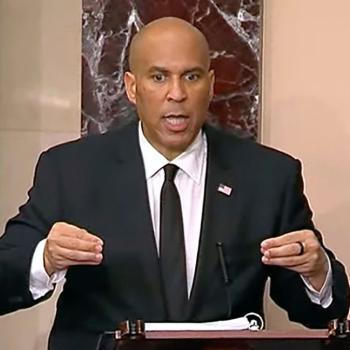In connection with the truth as inwardness in existence… the law is: the same, and yet changed, and still the same (Søren Kierkegaard, Concluding Unscientific Postscript to the Philosophical Fragments, Swenson and Lowrie translation, 254)
Last year around this time, I jumped on the #mythreewords bandwagon. It was a fun experiment attempting to develop a mission statement for the year in advance of living it, but I found, generally speaking, it didn’t pan out very well. Life as a dad and pastor, life lived the way I tend to live life, for better or worse, is considerably more random than three words can encompass.
But for all that, this life is remarkably repetitious in its randomness.
This year, I’m more curious about the repetition of the new year every new year qua new year. Every new year “the culture” keeps coming back around and encouraging itself in the same-old same-old. We’re so predictable the U.S. government is even able to measure and blog such things (http://www.usa.gov/Citizen/Topics/New-Years-Resolutions.shtml).
The whole resolutions thing is entirely tiring, exhausting us in renewed commitment to the very things we attempted and failed the year prior. It is also entirely re-energizing, inspiring us to continue the same new habits we started and maintained successfully the whole year.
But why do we keep doing it? Is it simply that somewhere along the line we adopted a cyclical calendar that is also linear, cycling around the years while always moving forward?
I have noticed that, at imprecise intervals, we are all repetitious, even on the bigger themes. For example, as I sat down to write this blog, I remembered I had written a post on the spirituality of repetition a while back, and it turns out it was one decade ago, December of 2004 (http://lutheranconfessions.blogspot.com/2004/12/concerning-spirituality-of-repetition.html). And in January of this year I blogged four mini book reviews, one of which was of Catherine Pickstock’s seminal Repetition and Identity: The Literary Agenda.
Repetition and Identity offers a theory of the existing thing. A thing has identity and consistency when it has been repeated, already. Repetition also summons difference and invokes a shadow of a connecting sign. The quest for the identity and consistency of this thing leads us from the subject through fiction and history and to sacred history, to shape an ontology which is also a literary theory and a literary artefaction (adapted from http://kingdomofheavenflx.org/fgb/repetition-and-identity-the-literary-agenda.pdf).
For Pickstock liturgy and writing are themselves ontological, so literary artefaction is by no means artifice. Not everyone, especially those of a more literalist persuasion, will accept this thesis, but it is a helpful alternative to straight-up post-structuralist thought.
Then, of course, Kierkegaard also famously wrote on repetition in a philosophical novel of that name.
In it, although it is a strange little book, Kierkegaard offers some hints as to why we ought to give more considered attention to repetition. He writes, for example:
Who could want to be a tablet on which time writes something new every instant or to be a memorial volume of the past?Who would want to be susceptible to every fleeting thing, the novel, which always enervatingly diverts the soul anew? If God himself had not willed repetition, the world would not have come into existence. Either he would have followed the superficial plans of hope or he would have retracted everything and preserved it in recollection. This he did not do. Therefore, the world continues, and it continues because it is a repetition. Repetition — that is actuality and the earnestness of existence. The person who wills repetition is mature in earnestness. (132-133)
Repetition isn’t an abstraction to consider, it is actuality itself. Back up a bit from life and it is easy to see why this is so. It is rather remarkable, when one considers it, that we are consistently the same person from moment to moment. Our identities have a kind of perdurance that is extraordinary. In middle age, listen to an old VHS tape of a speech you gave in high school, and you will still hear some inflections, key themes, still see some facial tics and mannerisms endure from then until the present.
















